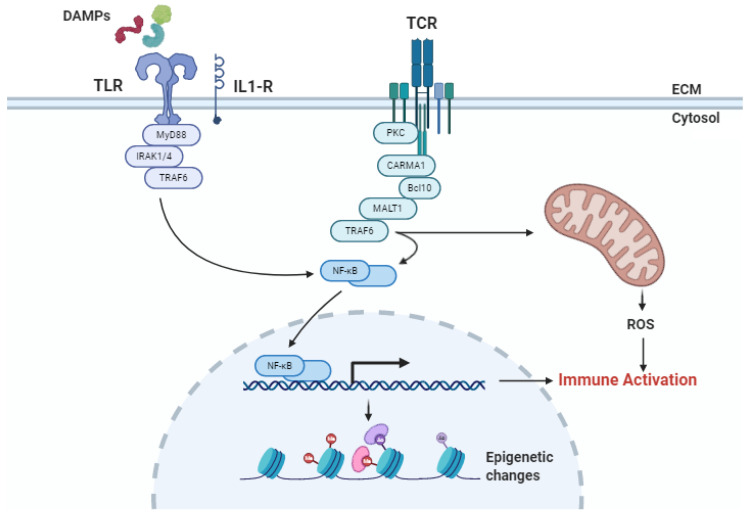Figure 2.
Signaling pathways involved in ischemia/reperfusion injury (IRI). (1) Damage-associated molecular patterns (DAMPs), released by injured and necrotic cells during IRI, are recognized by pattern recognition receptors (PRRs), such as Toll-like receptors (TLR), and Interleukin-1 receptor (IL1-R). The activation of PRRs results into the induction of nuclear factor-κB (NF-κB), which is a key regulator of DNA transcription, cytokine production, and pro-inflammatory signaling. As a result, DNA acquires epigenetic marks, and an immune response is initiated. (2) During IRI, T cells recognize specific antigens (Ags) through the T cell receptor (TCR), activating NF-κB and initiating an immune response without antigen-presenting cells. (3) The recognition of DAMPs or Ags leads to an increase of Nicotinamide Adenine Dinucleotide Phosphate Hydrogen (NADPH) oxidase activity in mitochondria, generating reactive oxygen species (ROS), which maintain the immune activation. Abbreviation: ECM, extracellular matrix; PKC, protein kinase C; CARMA, CARD motif of a subfamily of membrane-associated guanylate kinase (MAGUK) proteins called CARD-MAGUKs; MALT1, paracaspase MLT.

